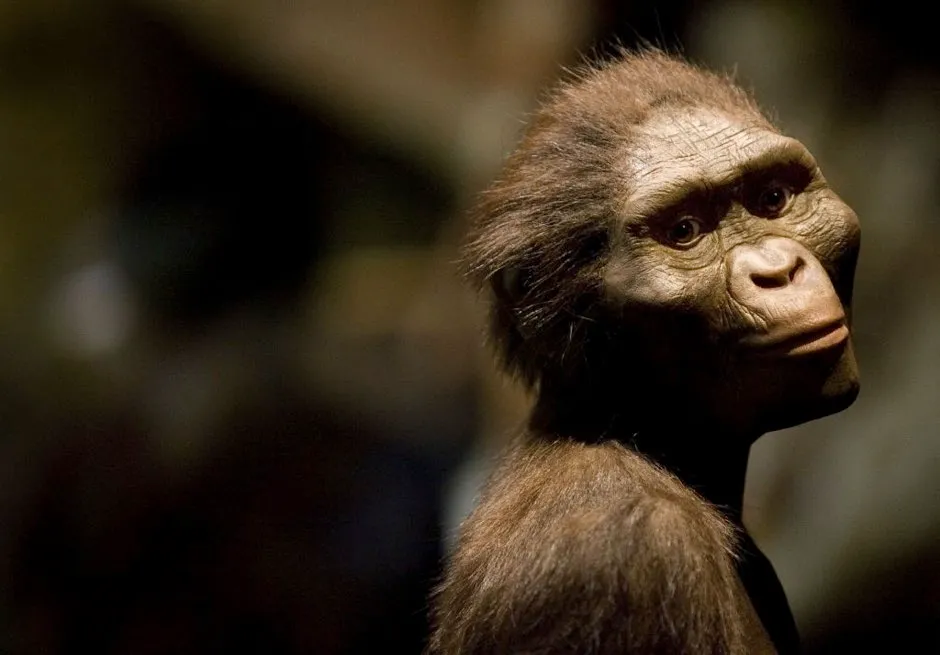Early human relatives may not have been as smart as the great apes of today, casting into doubt previous theory, a new study suggests.
Despite having a similar-sized brain to gorillas, chimps and orangutans, scientists believe Australopithecus had a lower rate of blood flow to their brain.
The research suggests that in modern apes, the skulls’ tiny, window-like openings for arteries allow as much as double the rate of blood flow to the brain.
According to the study, this indicates intelligence in modern Homo species developed much faster, likely in step with rising social complexity.
Read more about early human ancestors:
- Were we once aquatic apes?
- New species of tiny hominin discovered in the Philippines
- The invention of spears and bows and arrows may have helped early humans drive Neanderthals to extinction
Researchers at the University of Adelaide measured the size of the canals that pass through the skulls of living great apes and compared them to those in fossil skulls of human ancestors.
This included 3 million-year-old Australopithecus.
The size of the canals indicates the rate of blood flow to the brain.
Modern gorillas have twice the rate of blood flow in these arteries than Australopithecus, despite similarly sized brains.
Scientists found that smaller-brained chimpanzees and orangutans also have greater blood flow rates than human ancestors.
Blood flow is related to brain metabolic rate (MR) and intelligence.

The authors, led by Dr Roger Seymour at the University of Adelaide, published their findings in Royal Society B: Biological Sciences.
They wrote: “The results cast doubt over the notion that the neurological and cognitive traits of recent great apes adequately represent the abilities of Australopithecus species.
“The use of modern primates as a proxy for hominin evolution may have prevailed historically due to similar brain sizes.”
They added that the rate of blood flow being twofold higher in gorillas than in Australopithecus is “surprising, given that the Australopithecus have been placed between great apes and humans on the basis of several measures relating to brain and intelligence”.
The authors say: “Apparently, the underlying assumptions that cognitive ability, brain MR and blood flow rate all scale with brain size in parallel, and that the patterns evident in living haplorhine primates apply to hominins, are incorrect.”
Fossilised skull reveals face of early human ancestor
The skull was discovered in 2016 at Miro Dora, in the Mille district of the Afar Regional State in Ethiopia. Analysis of its shape indicates that it belongs to Australopithecus anamensis, an ancient hominin that dates back to a time when early human ancestors were transitioning from living in trees to living on the ground.
